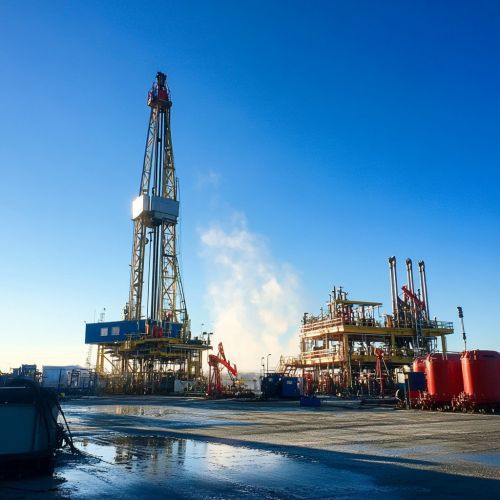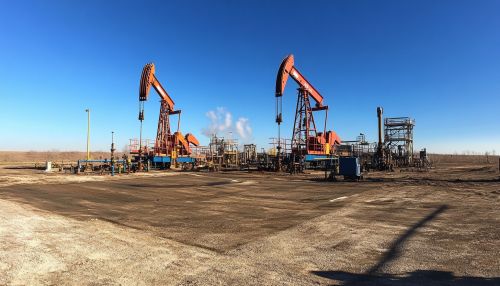Enhanced Oil Recovery
Introduction
Enhanced Oil Recovery (EOR) refers to a set of techniques used to increase the amount of crude oil that can be extracted from an oil field. These methods are employed after primary and secondary recovery techniques have been exhausted, typically when the natural pressure of the reservoir has declined. EOR is crucial for maximizing the output of mature oil fields and involves complex processes that require a deep understanding of reservoir engineering, fluid dynamics, and chemical interactions.
History and Development
The concept of EOR has evolved significantly since its inception in the early 20th century. Initial efforts focused on simple water flooding techniques, which were later supplemented by more advanced methods as technology progressed. The 1970s energy crisis spurred significant research and development in EOR technologies, leading to innovations such as thermal recovery, gas injection, and chemical flooding. These methods have been refined over the decades, with advancements in computer modeling and simulation playing a critical role in optimizing EOR strategies.
Types of Enhanced Oil Recovery
EOR techniques can be broadly categorized into three main types: thermal recovery, gas injection, and chemical flooding. Each method has its own set of applications, advantages, and challenges.
Thermal Recovery
Thermal recovery involves the introduction of heat to the reservoir to reduce the viscosity of heavy oils, making them easier to extract. The most common thermal EOR methods include:
- **Steam Injection**: This technique involves injecting steam into the reservoir to heat the oil, thereby reducing its viscosity. Steam injection can be further divided into cyclic steam stimulation and steam flooding.
- **In-Situ Combustion**: Also known as fire flooding, this method involves igniting a portion of the oil in the reservoir to generate heat, which then reduces the viscosity of the surrounding oil.


Gas Injection
Gas injection is the most widely used EOR technique and involves injecting gases such as carbon dioxide (CO2), natural gas, or nitrogen into the reservoir. This method can be subdivided into miscible and immiscible gas injection:
- **Miscible Gas Injection**: Involves injecting gases that mix with the oil, reducing its viscosity and improving flow. CO2 is commonly used due to its ability to dissolve in oil and expand its volume.
- **Immiscible Gas Injection**: Involves injecting gases that do not mix with the oil but help maintain reservoir pressure and displace oil towards production wells.
Chemical Flooding
Chemical flooding involves the injection of chemicals to improve oil recovery. This method includes:
- **Polymer Flooding**: Uses polymers to increase the viscosity of the injected water, improving its ability to sweep oil towards production wells.
- **Surfactant Flooding**: Involves injecting surfactants to reduce the interfacial tension between oil and water, facilitating the mobilization of trapped oil.
- **Alkaline Flooding**: Uses alkaline chemicals to react with acidic components in the oil, forming soaps that help in reducing interfacial tension.
Mechanisms of Enhanced Oil Recovery
The effectiveness of EOR techniques relies on various mechanisms that enhance oil displacement and recovery:
- **Mobility Control**: Achieved by altering the viscosity of the displacing fluid to improve sweep efficiency.
- **Interfacial Tension Reduction**: Lowering the tension between oil and water phases to mobilize trapped oil.
- **Wettability Alteration**: Changing the wettability of the reservoir rock to favor oil displacement.
- **Pressure Maintenance**: Sustaining reservoir pressure to facilitate oil flow.
Challenges and Considerations
Implementing EOR techniques involves several challenges, including:
- **Reservoir Heterogeneity**: Variations in rock properties can affect the uniformity of EOR processes.
- **Economic Viability**: High costs associated with EOR technologies necessitate careful economic analysis.
- **Environmental Impact**: EOR operations can have significant environmental implications, including greenhouse gas emissions and water usage.
- **Technical Complexity**: Requires advanced knowledge of reservoir engineering and fluid dynamics.
Future Prospects and Innovations
The future of EOR lies in the development of more efficient and environmentally friendly techniques. Innovations such as microbial EOR, which utilizes microorganisms to enhance oil recovery, and the integration of nanotechnology for improved chemical delivery, hold promise for the industry. Additionally, the use of artificial intelligence and machine learning in reservoir modeling and optimization is expected to revolutionize EOR strategies.
